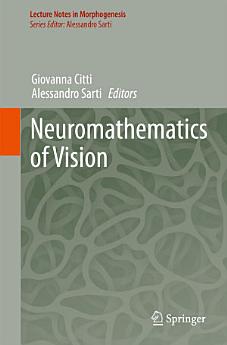Neuromathematics of Vision
Giovanna Citti · Alessandro Sarti
2014年2月 · Springer Science & Business Media
电子书
367
页
report评分和评价未经验证 了解详情
关于此电子书
This book is devoted to the study of the functional architecture of the visual cortex. Its geometrical structure is the differential geometry of the connectivity between neural cells. This connectivity is building and shaping the hidden brain structures underlying visual perception. The story of the problem runs over the last 30 years, since the discovery of Hubel and Wiesel of the modular structure of the primary visual cortex, and slowly cams towards a theoretical understanding of the experimental data on what we now know as functional architecture of the primary visual cortex.
Experimental data comes from several domains: neurophysiology, phenomenology of perception and neurocognitive imaging. Imaging techniques like functional MRI and diffusion tensor MRI allow to deepen the study of cortical structures. Due to this variety of experimental data, neuromathematematics deals with modelling both cortical structures and perceptual spaces.
From the mathematical point of view, neuromathematical call for new instruments of pure mathematics: sub-Riemannian geometry models horizontal connectivity, harmonic analysis in non commutative groups allows to understand pinwheels structure, as well as non-linear dimensionality reduction is at the base of many neural morphologies and possibly of the emergence of perceptual units. But at the center of the neurogeometry is the problem of harmonizing contemporary mathematical instruments with neurophysiological findings and phenomenological experiments in an unitary science of vision.
The contributions to this book come from the very founders of the discipline.
Experimental data comes from several domains: neurophysiology, phenomenology of perception and neurocognitive imaging. Imaging techniques like functional MRI and diffusion tensor MRI allow to deepen the study of cortical structures. Due to this variety of experimental data, neuromathematematics deals with modelling both cortical structures and perceptual spaces.
From the mathematical point of view, neuromathematical call for new instruments of pure mathematics: sub-Riemannian geometry models horizontal connectivity, harmonic analysis in non commutative groups allows to understand pinwheels structure, as well as non-linear dimensionality reduction is at the base of many neural morphologies and possibly of the emergence of perceptual units. But at the center of the neurogeometry is the problem of harmonizing contemporary mathematical instruments with neurophysiological findings and phenomenological experiments in an unitary science of vision.
The contributions to this book come from the very founders of the discipline.
为此电子书评分
欢迎向我们提供反馈意见。
如何阅读
智能手机和平板电脑
笔记本电脑和台式机
您可以使用计算机的网络浏览器聆听您在 Google Play 购买的有声读物。
电子阅读器和其他设备
如果要在 Kobo 电子阅读器等电子墨水屏设备上阅读,您需要下载一个文件,并将其传输到相应设备上。若要将文件传输到受支持的电子阅读器上,请按帮助中心内的详细说明操作。





